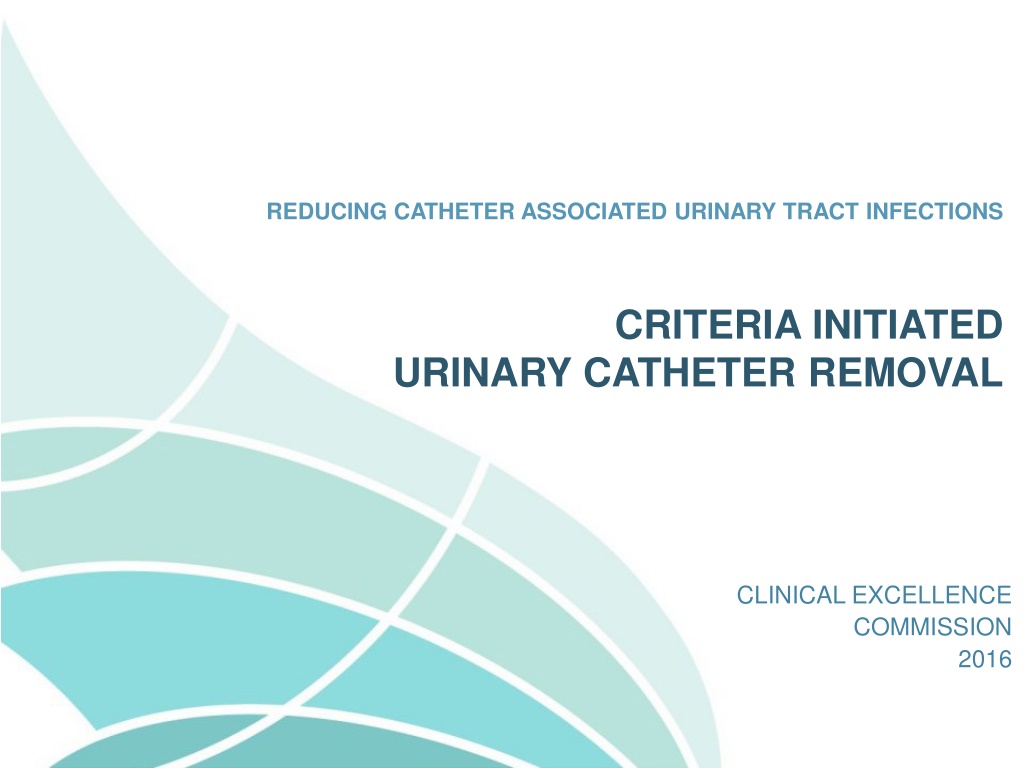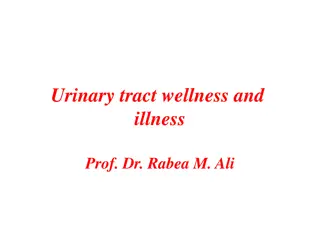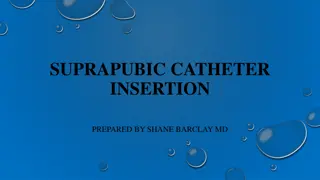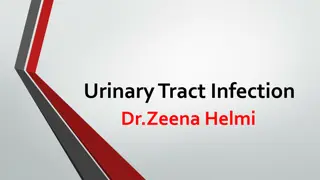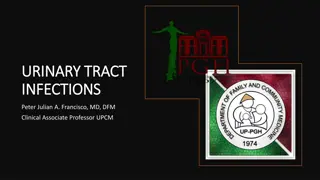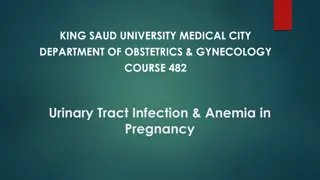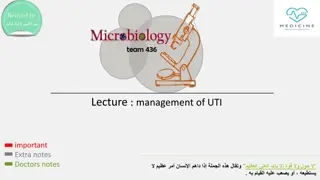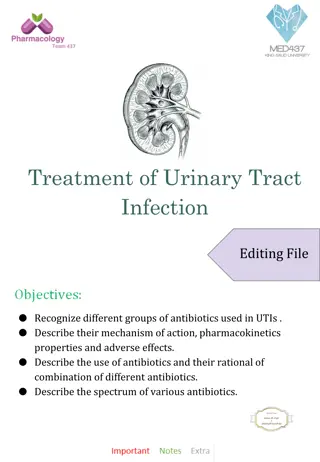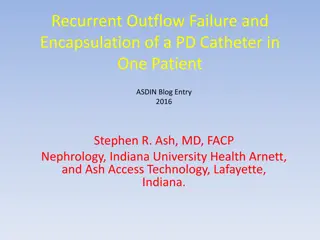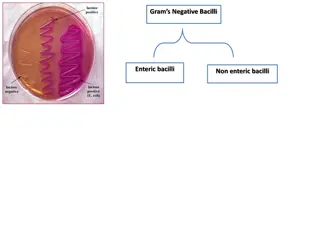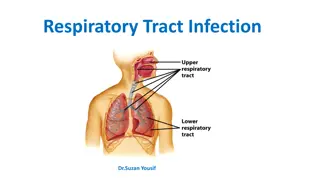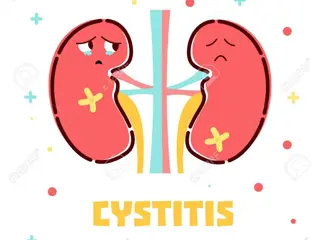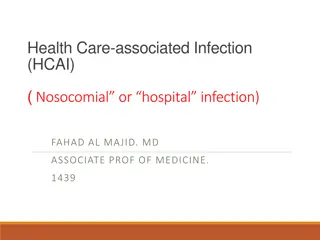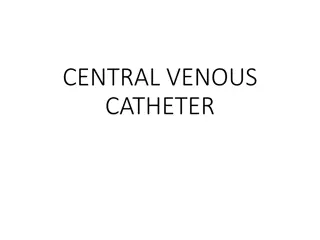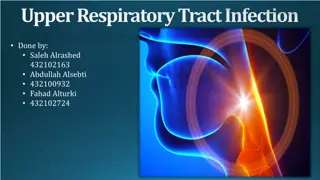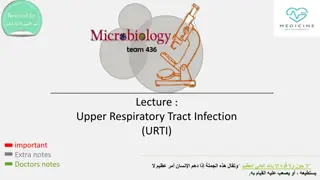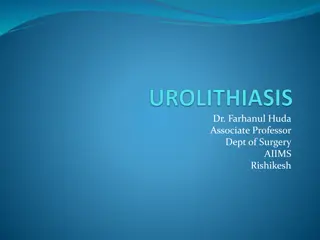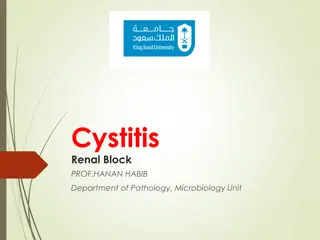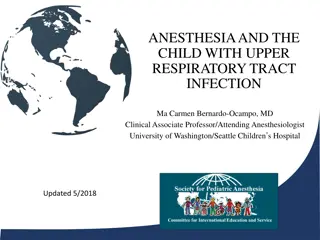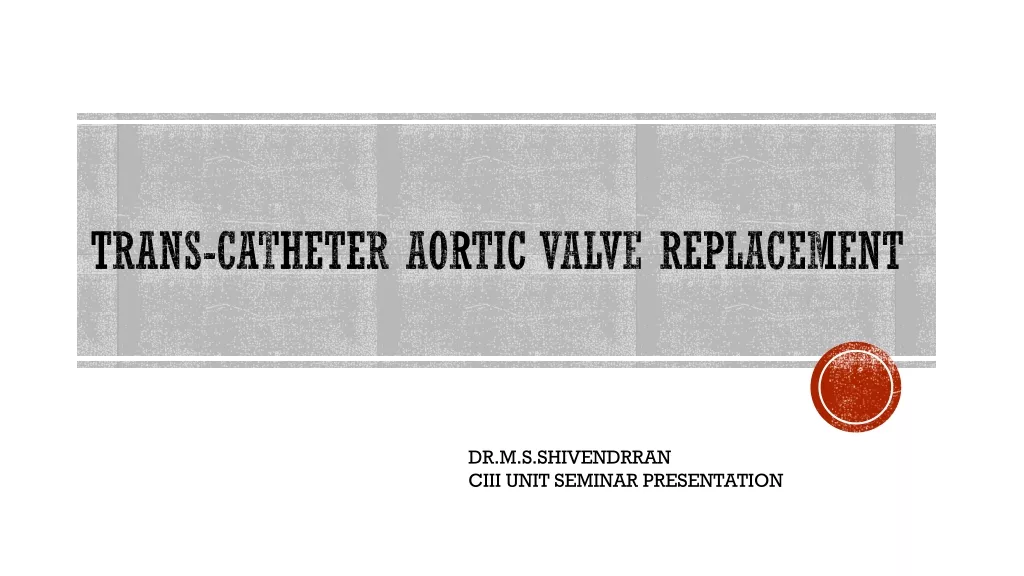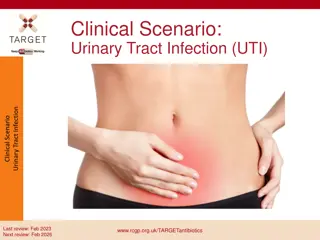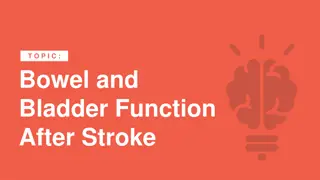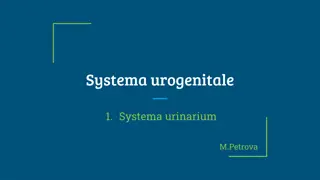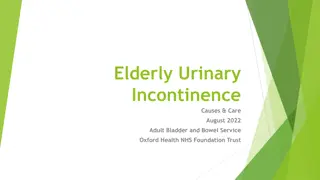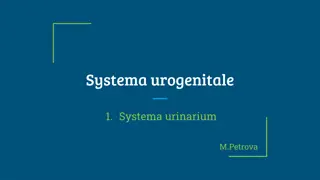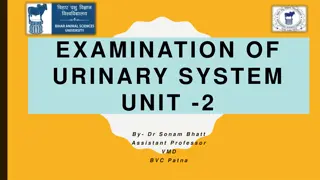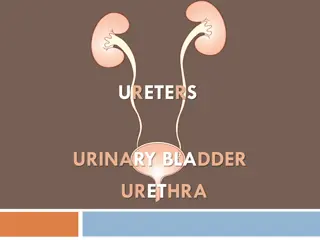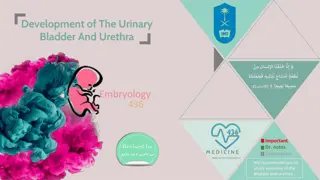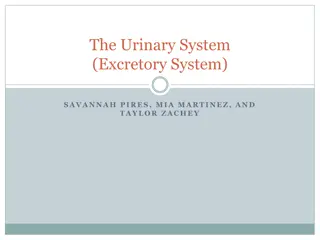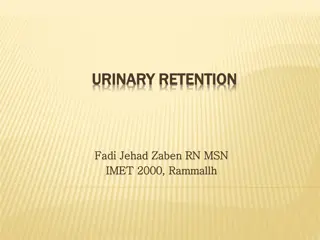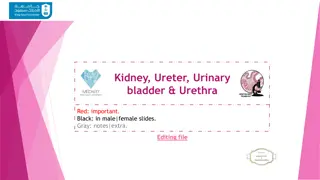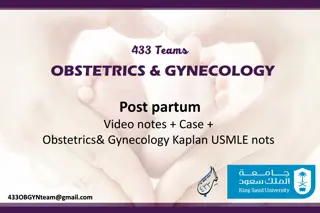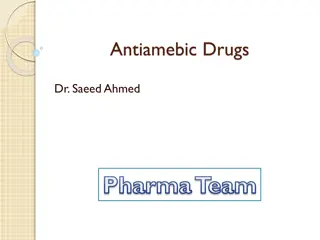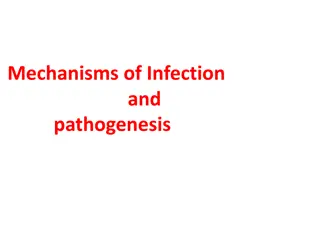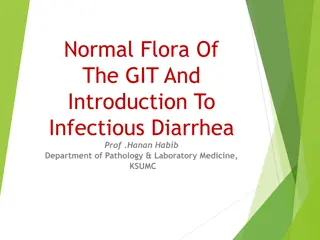Strategies for Preventing Catheter-Associated Urinary Tract Infections
Catheter-associated urinary tract infections are a common healthcare-associated infection, with 80% of hospitalized patients experiencing a urinary tract infection. This article provides guidelines for preventing CAUTIs, such as only catheterizing patients when necessary, maintaining asepsis, practicing effective hand hygiene, using aseptic techniques, and reducing catheterization dwell time.
Download Presentation

Please find below an Image/Link to download the presentation.
The content on the website is provided AS IS for your information and personal use only. It may not be sold, licensed, or shared on other websites without obtaining consent from the author. Download presentation by click this link. If you encounter any issues during the download, it is possible that the publisher has removed the file from their server.
E N D
Presentation Transcript
REDUCING CATHETER ASSOCIATED URINARY TRACT INFECTIONS CRITERIA INITIATED URINARY CATHETER REMOVAL CLINICAL EXCELLENCE COMMISSION 2016
Whats a CAUTI? Catheter Associated Urinary Tract Infection (CAUTI) Most common healthcare associated infection (HAI) 80% patients have a urinary tract infection (UTI) during a hospital admission* *Lo, E., L. Nicolle, S. Coffin, et al. (2014). "Strategies to Prevent Catheter-Associated Urinary Tract Infections in Acute Care Hospitals: 2014 Update." Infection Control and Hospital Epidemiology 35(5): 464-479. 2
Preventing CAUTIs Only catheterise a patient if clinically indicated Maintain asepsis when handling catheter and drainage device Use effective hand hygiene practices Useaseptic technique Reduce the dwell time of catheterisation 3
Ordered catheter removal 2 MO 1 recognises that catheter is no longer needed. MO recognises that a catheter is in place. 3 MO writes order to remove catheter. 4 Nurse removes catheter Meddings, J., et al., Reducing unnecessary urinary catheter use and other strategies to prevent catheter-associated urinary tract infections: an integrative review. BMJ Quality & Safety, 2013. 0: p. 1-13. 5
Ordered catheter removal What if there is no medical officer present? ? 1 MO recognises that catheter is in place. What if the medical officer isn t aware that a catheter is in place? 6
Ordered catheter removal What if the medical officer doesn t know the initial indication for catheterisation? ? 2 Physician recognises that catheter is no longer needed. What if the medical officer is unaware that the catheter is no longer needed? 7
Ordered catheter removal order?? 3 Physician writes order to remove catheter. What if the medical officer doesn t document a removal 8
Ordered catheter removal removed?? 4 Nurse removes catheter What if catheter is not 9
A case study - Lionels story Lionel, a 35 year old male cyclist, was admitted to the ED following a collision with a car. He had obvious pelvis trauma and excessive blood loss and was intubated by paramedics. A full body CT scan revealed an anterior posterior compression of the pelvis and a nearby tear to the femoral artery. Lionel was transferred immediately to the OT for repair of the arterial tear and fractured pelvis. Lionel s clinical condition improved and he was allowed to gently mobilise 72 hrs after surgery. During the trauma team ward round on post-op day four, the surgeon mentioned to the team registrar, the intern and the two attending nurses that Lionel s urinary catheter could come out. Three days later, the rehabilitation team reviewed Lionel and noticed that Lionel s urinary catheter was still in place. Record about the urinary catheter insertion could not be traced or located. 10
Ordered catheter removal sometimes fails unnecessarily prolongs dwell time increase UTI risk 11
Criteria-initiated catheter removal protocol Driven by resolution of indication for catheterisation Based on observation and assessment of the individual patient Is not dependent on medical officer Two stage systematic clinical pathway 12
Criteria-initiated catheter removal protocol Stage 1: Decision making for removal START HERE Patient has an indwelling urinary catheter (IDC) in place Q1. Is there a documented medical order for the IDC to remain in situ? YES IDC is to remain in situ. Reassess need for catheterisation within next 24 hours. Q2. Has the clinical indication for catheterisation been resolved? NO Check for insertion difficulty, bowel movement in last 24 hours and medication history. Q3. Is the patient constipated or is taking medication that affects bladder contractility or tone? YES 13
Criteria-initiated catheter removal protocol Stage 1: Decision making for removal Is there a documented reason for the catheter to remain in situ? Is there any clinical indication for catheterisation present? Is the patient constipated or taking any medication that will affect bladder contractility or tone? If YES to any question do not remove catheter STOP If NO to all questions remove catheter and go to to Stage 2 GO 14
Criteria-initiated catheter removal protocol Stage 2: Trial of void procedure A.Recatheterise with IUC. Restart catheter removal protocol as per MO/Specialist nurse s documented instructions. Remove catheter. Provide patient with receptacle to collect urine. Educate patient on TOV procedure. Document removal in healthcare record. Encourage fluid intake. (Be mindful of any fluid restrictions). Maintain fluid balance chart. B. Catheterise with Intermittent catheter Q4. Did the patient void within 6hr of catheter removal? YES YES NO Review fluid balance Scan bladder Prompt patient to void Measure volume of void Scan bladder to confirm residual volume (repeat as necessary to review trend) C.Wait for patient to void as per documented MO/specialist nurse instructions. PATIENT VOIDED PATIENT VOIDED No Void NO VOID NO VOID Q5. Was voiding pain free*? YES YES NO Monitor fluid balance. Be mindful of clinical signs of urinary retention. Team leader/MO/specialist nurse to determine and document clinical pathway (A, B, C) based on assessment of: Fluid balance Total bladder volume*** Clinical picture/history Pain or discomfort* Moderate or large urine volume recorded on scan** No or small urine volume recorded on scan** Leave catheter out Team leader/MO/ specialist nurse to further investigate and document plan * May not be appropriate for patients with spinal cord injury, stroke or delirium. ** Post residual is variable and requires individual assessment. A post void residual of 1/3 of the voided volume maybe acceptable. *** Total bladder volume = volume voided + volume scanned 15
Criteria-initiated catheter removal protocol Stage 2: Trial of void procedure Once the catheter is removed: Encourage fluid intake, in line with any fluid restrictions, and maintain fluid balance chart Ensure patient can easily access the bathroom facilities Consider potential for fall risk Monitor and assist patient if they are confused Observe if the patient voided in the six hrs after removal Observe if the patient experienced any pain during voiding 16
Criteria-initiated catheter removal protocol Stage 2: Trial of void procedure If voiding was pain free: scan bladder to confirm residual volume leave catheter out monitor for signs of urinary retention GO If voiding was painful: Team leader/MO/specialist nurse to investigate STOP 17
Criteria-initiated catheter removal protocol Stage 2: Trial of void procedure If voiding did not occur within 6hrs of catheter removal: Review fluid balance Scan bladder Prompt patient to void Inform patient recatheterisation may be required ! Then if voiding still does not occur: Seek advice from team leader/ MO/specialist nurse to either: A. Catheterise with in/out catheter B. Wait longer for patient to void C. Recatheterise with indwelling catheter 18
Documentation for removal Date and time of removal Trial of void outcome and clinical plan Amount voided after removal Pain (+/-) Any bladder scan results from the TOV Clinical misadventures during removal Abnormalities observed during removal 19
Thank you For further information: hai@cec.health.nsw.gov.au www.cec.health.nsw.gov.au 20
